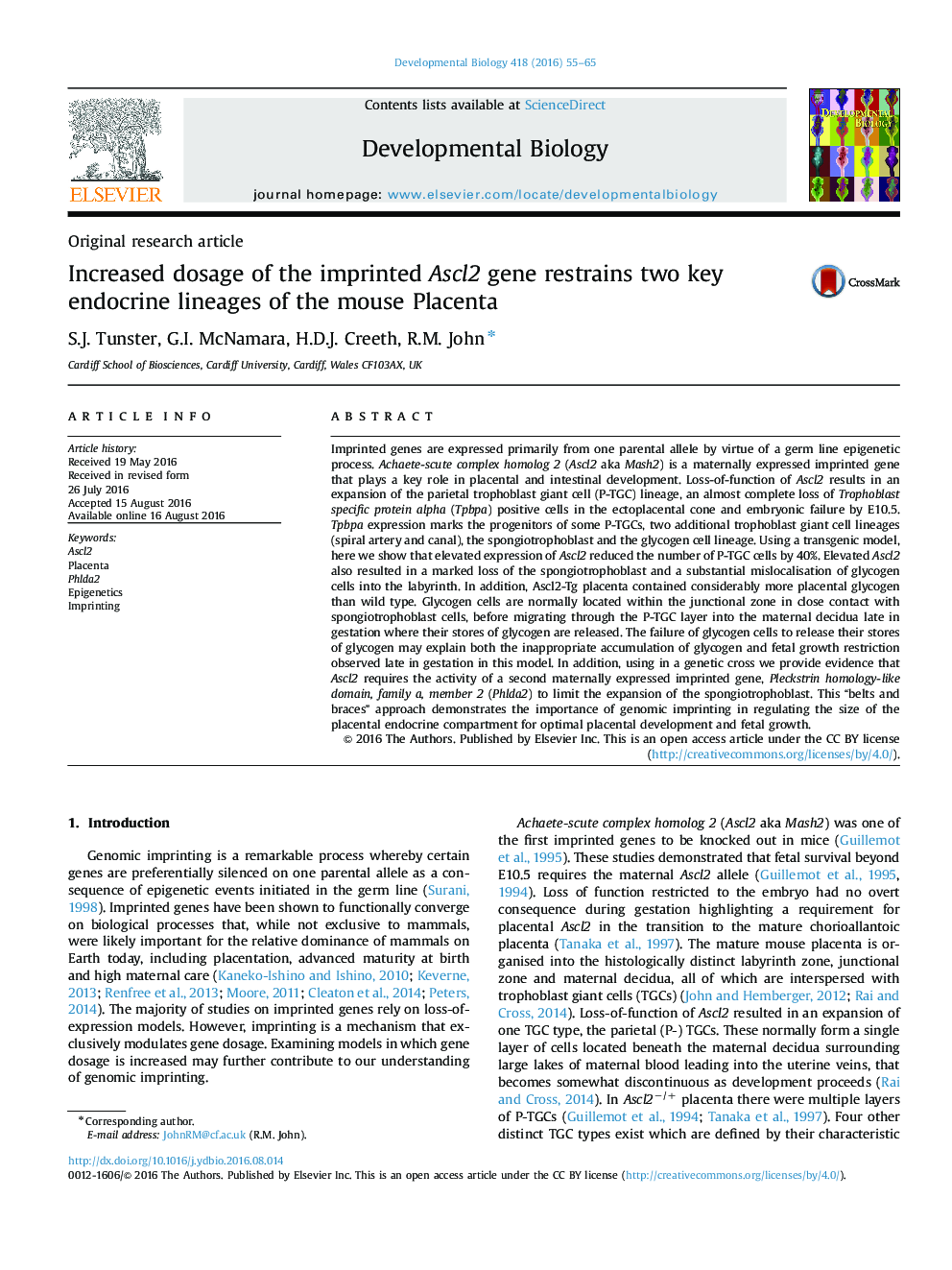| کد مقاله | کد نشریه | سال انتشار | مقاله انگلیسی | نسخه تمام متن |
|---|---|---|---|---|
| 5531996 | 1401825 | 2016 | 11 صفحه PDF | دانلود رایگان |

- Increased Ascl2 dosage results in a gross mislocalisation of placental glycogen cells and fetal growth restriction.
- Ascl2 restrains expansion of the parietal trophoblast giant cell lineage
- Ascl2 acts upstream of Phlda2 to restrain expansion of the spongiotrophoblast.
- These data highlight a “belts and braces” approach to regulating placental lineage development.
Imprinted genes are expressed primarily from one parental allele by virtue of a germ line epigenetic process. Achaete-scute complex homolog 2 (Ascl2 aka Mash2) is a maternally expressed imprinted gene that plays a key role in placental and intestinal development. Loss-of-function of Ascl2 results in an expansion of the parietal trophoblast giant cell (P-TGC) lineage, an almost complete loss of Trophoblast specific protein alpha (Tpbpa) positive cells in the ectoplacental cone and embryonic failure by E10.5. Tpbpa expression marks the progenitors of some P-TGCs, two additional trophoblast giant cell lineages (spiral artery and canal), the spongiotrophoblast and the glycogen cell lineage. Using a transgenic model, here we show that elevated expression of Ascl2 reduced the number of P-TGC cells by 40%. Elevated Ascl2 also resulted in a marked loss of the spongiotrophoblast and a substantial mislocalisation of glycogen cells into the labyrinth. In addition, Ascl2-Tg placenta contained considerably more placental glycogen than wild type. Glycogen cells are normally located within the junctional zone in close contact with spongiotrophoblast cells, before migrating through the P-TGC layer into the maternal decidua late in gestation where their stores of glycogen are released. The failure of glycogen cells to release their stores of glycogen may explain both the inappropriate accumulation of glycogen and fetal growth restriction observed late in gestation in this model. In addition, using in a genetic cross we provide evidence that Ascl2 requires the activity of a second maternally expressed imprinted gene, Pleckstrin homology-like domain, family a, member 2 (Phlda2) to limit the expansion of the spongiotrophoblast. This “belts and braces” approach demonstrates the importance of genomic imprinting in regulating the size of the placental endocrine compartment for optimal placental development and fetal growth.
Journal: Developmental Biology - Volume 418, Issue 1, 1 October 2016, Pages 55-65